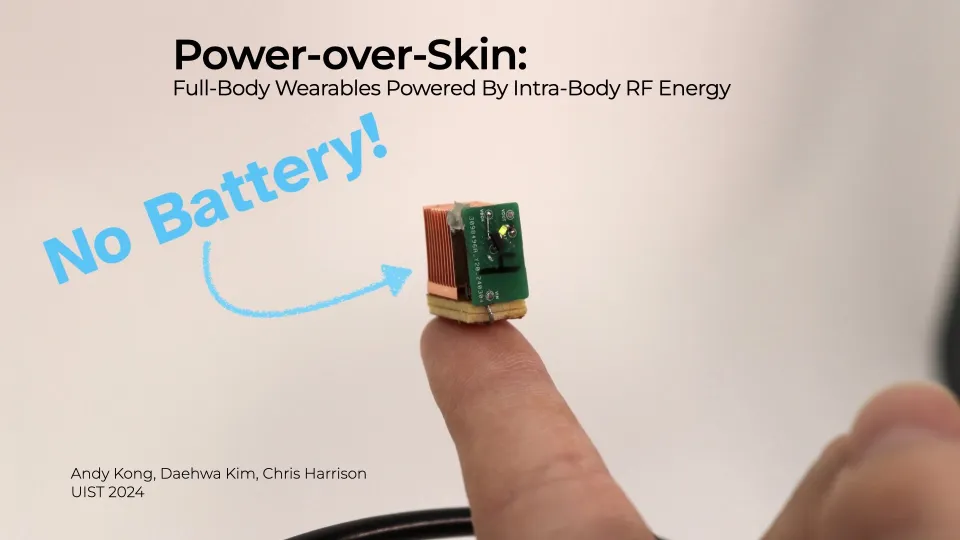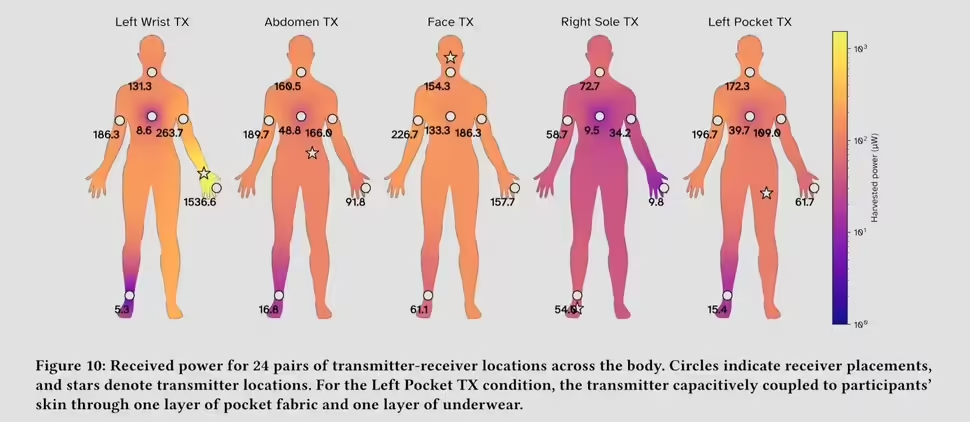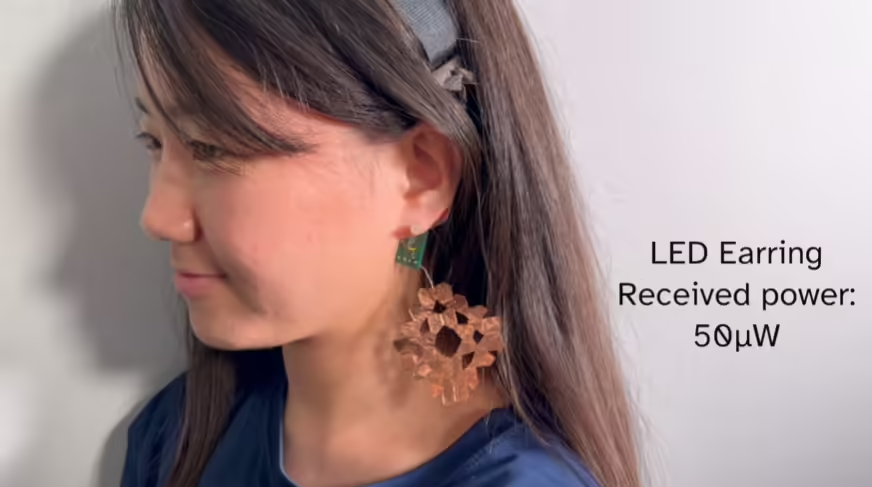Carnegie Mellon UniversityResearchers at the University of California at Berkeley have developed a technology called "Power-over-Skin" that utilizes radio frequency energy generated by the human body to provide a new form of skin care that can be applied to the skin.Wearable devicespowered, promising to get rid of batteries altogether.

With advances in computing technology, wearable electronic devices are becoming smaller and more functional. However, the issue of power supply remains a challenge. While some devices have been able to utilize solar charging, batteries are still an essential component.
Researchers at Carnegie Mellon University's Future Interfaces Group have proposed a solution called "Power-over-Skin," a technology that utilizes radio frequency energy generated by the human body to power wearable devices. This approach eliminates the need to touch anything other than skin, and has the potential to completely eliminate the reliance on batteries.
The researchers found thatThe human body is capable of efficiently generating 40 MHz of RF energy.The device is powered by a "receiver" that is worn non-invasively. By wearing a "receiver", this energy can be captured non-invasively to power a device. Researchers have focused on optimizing the size, weight, shape and power efficiency of these receivers. The receivers can be placed anywhere on the body and, thanks to their capacitive nature, can be used to power devices.You can even work through your clothes., which could theoretically be integrated into a smartphone.

The researchers have already demonstrated the technology using a variety of devices, including a Bluetooth ring with a joystick, a medical patch that records user health data, and a sunscreen patch with a screen. In the future, the technology could also be applied to VR / AR headsets and other new wearable devices. Since the human body is able to generate energy continuously, people can wear multiple devices at the same time without worrying about battery power.
The technology could power virtually any wearable device, eliminating the need for batteries, reducing the weight of the device and decreasing its size. This would enable wearable device manufacturers to create thinner, lighter and sleeker battery-free devices while reducing reliance on rare earth minerals.
While the technology is still in its early stages, its potential is huge. It could power a wide range of wearable devices, from simple watches to complex fitness trackers and medical devices. The only limitation is that the power consumption of the device must be relatively low, as the human body produces a limited amount of energy.

The researchers compared the technology to the self-winding mechanism found in mechanical watches. Mechanical watches use arm movements to wind the watch, but have since been replaced by more accurate and cheaper quartz watches. The "Power-over-Skin" technology is a more advanced method of utilizing the body's energy.
The researchers tested four transmitter locations: the sole of the right foot, the abdomen, the left wrist, and the face (potentially for AR/VR headsets). Each transmitter had six receiver locations: right ankle, back of neck, sternum, left and right biceps, and left index finger, which are typically where wearable devices are worn. The test results showed that the device with the shortest distance between the transmitter and receiver had the highest average power, thewas 1.53 mW and the lowest power was 5.3 μW.. Although it is possible to transmit through clothing, the efficiency will be reduced.
This research lays the groundwork for the future of battery-free wearables, demonstrating the feasibility of utilizing human-generated RF energy to power devices, opening up new possibilities for lighter and more convenient wearables in the future.